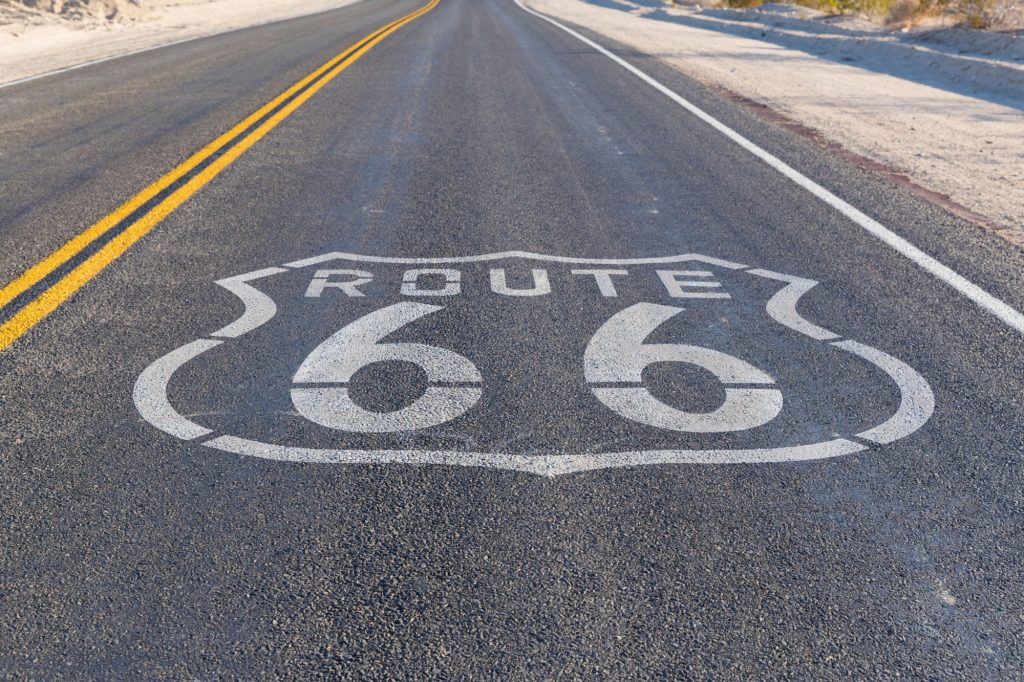Route 66 is more than a simple highway. For decades, it was the road that tied a lot of the country together, and towns appeared along it while travelers followed it west. But then it disappeared, piece by piece. Just what happened to it? Let’s find out where this iconic road went.
Featured Image Credit: Shutterstock.
Naming the route and the 1926 numbering compromise
The name “Route 66” came from a quick decision in a Springfield office. Originally, planners thought about using “Route 60,” but that number had some political issues between states. They wanted something easy to say & remember. And 66 stuck. After a few telegrams, the number became official & a highway legend began.
New Deal crews paved it end-to-end by 1938
In the early ’30s, a lot of the road was still rough dirt, although that changed when New Deal work programs kicked in. Thousands of men with shovels & steamrollers spent years surfacing the route, and section by section, they laid down proper pavement. By 1938, you could drive from Chicago to L.A. without hitting gravel once.
Wartime rebuilding at Hooker Cut moved massive traffic
Hooker Cut in Missouri looked like any ordinary stretch of road. However, during World War II, it became a traffic choke point because Fort Leonard Wood had become a lot more crowded. Workers had to widen & blast through rock to keep trucks and military convoys moving, so that by 1945, it was a four-lane cut.
Dust Bowl migrants used Route 66 into California
Families getting out of the Dust Bowl saw Route 66 as an escape route. Farmers from Oklahoma & Texas loaded up whatever cars they had and drove west through Needles, California, to find work in the fields. Historians estimate hundreds of thousands made that trip. They clogged numerous parts of the highway with loaded jalopies and hopes for a better life.
Motels along 66 matured into a national industry
Route 66 also helped to popularize those neon motel signs we associate with road trips, beginning with the travelers who stayed in scattered cabin camps. Over time, those grew into rows of motor courts with parking out front & standardized rooms. Motels became more than a mere pit stop by the 1960s. They were now an iconic part of the American highway experience.
Interstates replaced the corridor and the number vanished
Sadly, interstate highways started making their way across the same land as Route 66. This began in the late ’50s. Each new stretch, like I-40 or I-55, pulled traffic off 66, and as more segments opened, officials decided the old route number was redundant. It disappeared from the federal highway log altogether in 1985 & the towns on the route were forgotten.
What remains
Driving through parts of Texas or New Mexico, you’ll still be able to see cracked bits of the old 66 running parallel to the interstate. Some of these became frontage roads. As for others, nature took over, although preservation groups have worked to keep sections marked as “Historic Route 66.” In 1999, Congress set aside funds to restore some of 66’s landmarks.
The following sources were consulted in the preparation of this article:


